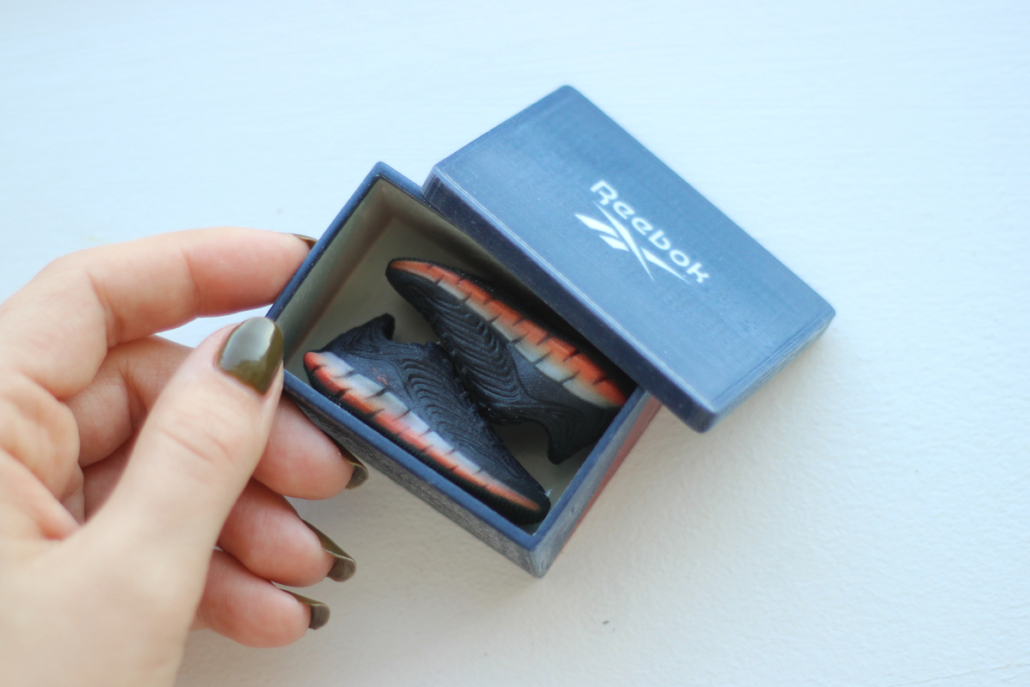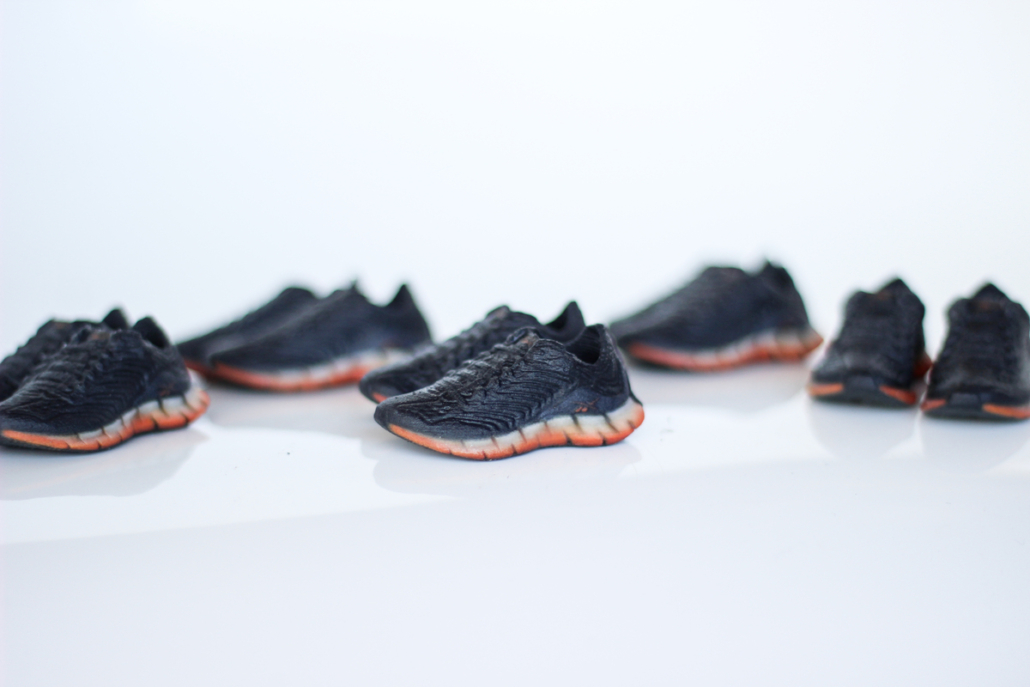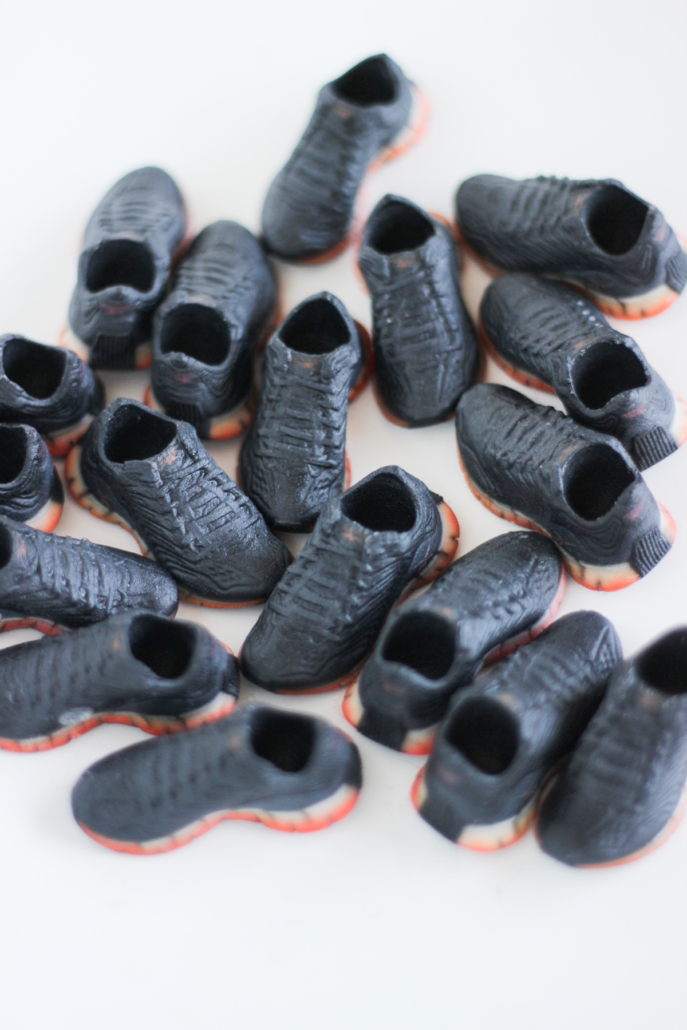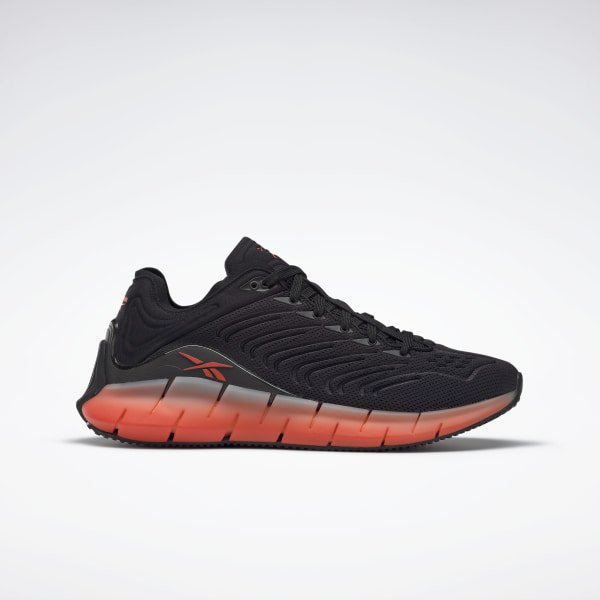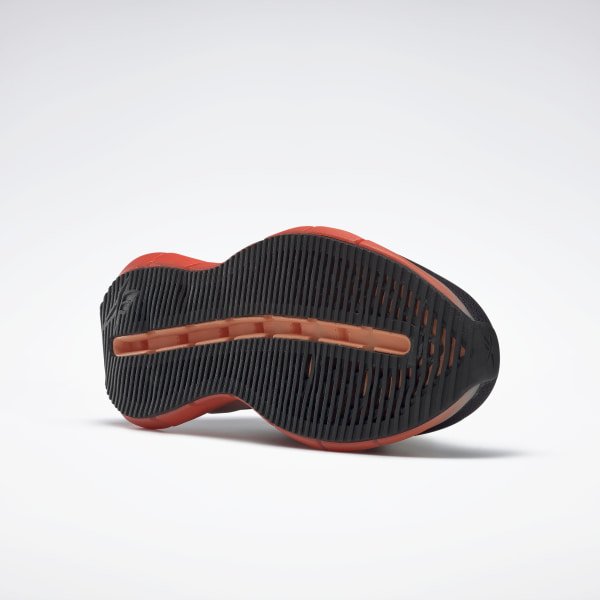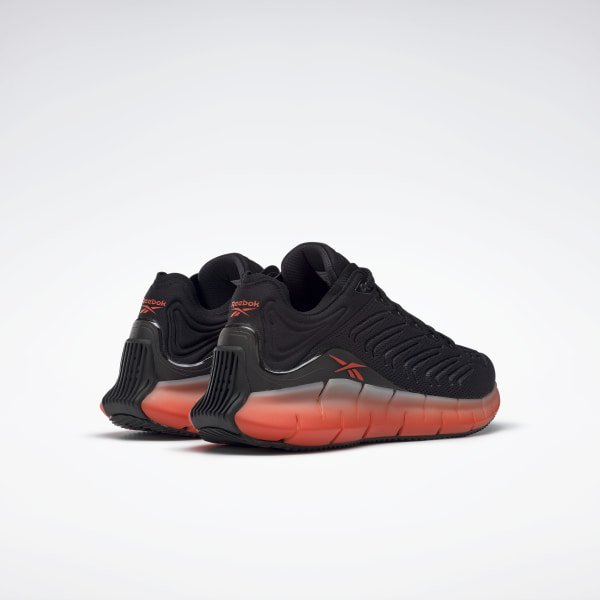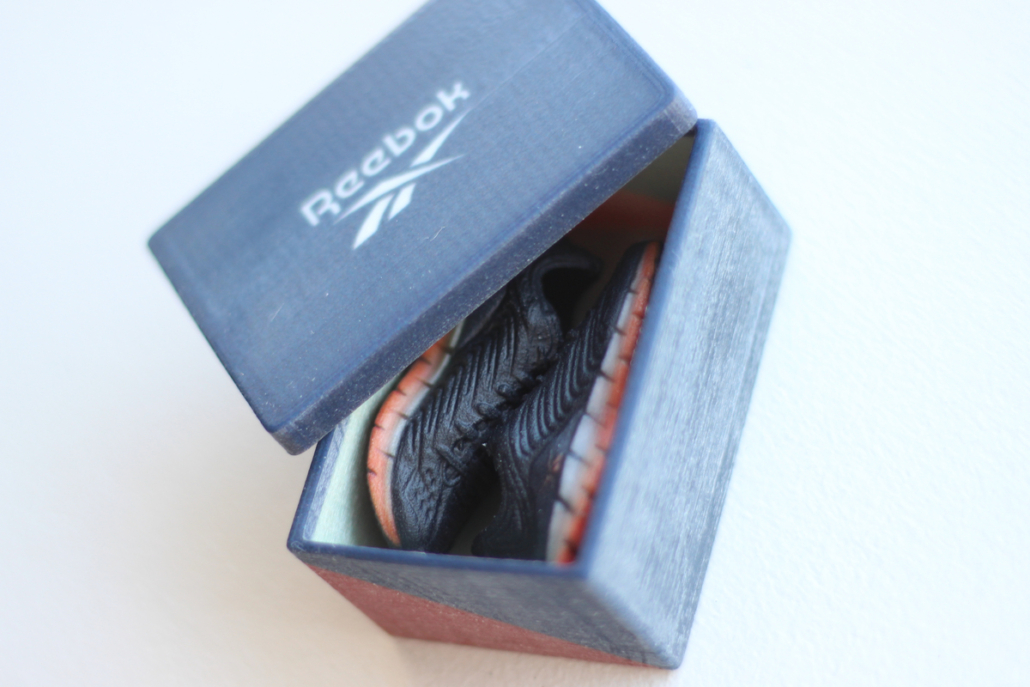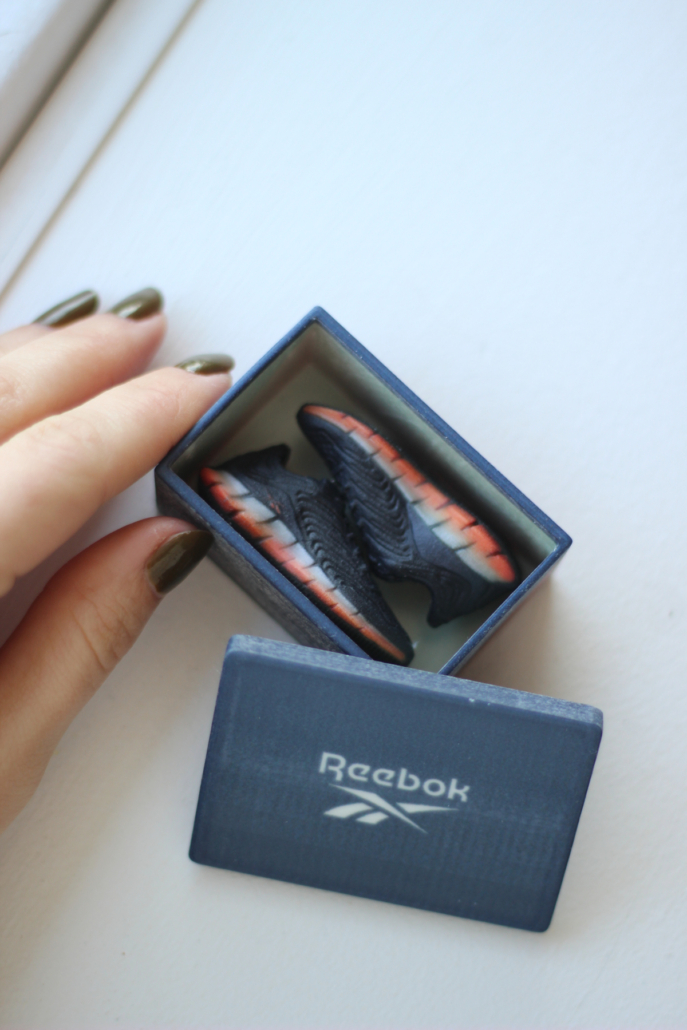Tag Archive for: 3d scanning
3D Printing in the retail space is nothing new, but we continue to see innovation in the footwear space, and how 3D Printing continues across more than just product design and development divisions.
At the forefront of the footwear industry, Adidas has been using 3D printing for years now and has even released shoes like The 4D run using cutting edge 3D printed midsoles. Nowadays brands like Reebok are utilizing advancements in full-color 3D Printing for promotional, marketing, and advertising material outside of just the product development stages.
Objex Unlimited was fortunate enough to work on this project for Reebok Canada to re-create miniature mockups of the release of The Zig for their recent viral Tik Tok campaign seen below:
The team at Reebok came to Objex Unlimited with a pair of “Zig’s”, and a concept of creating a miniature pair for their social influencers’ upcoming video campaign. They provided a few image examples and creative freedom on making it happen, and within a few weeks, we were able to deliver just that. A fresh pair of 3D Printed mini-kicks.
Here is the original Zig reference by Reebok:
The process looked something like this:
THE SHOE
- Since access to the CAD file was not readily available in time for their campaign we needed to create a 3D file from scratch. So we whipped up the digital asset to kick off the project. 3D scanning took place within a couple of minutes of having full access to the physical shoe. Our team was able to utilize our in-house Artec Eva and render up a 3D CAD file within a few hours. You can see the scan images below to get a better understanding of the data captured.
- Geometry was created using several stitched together scans

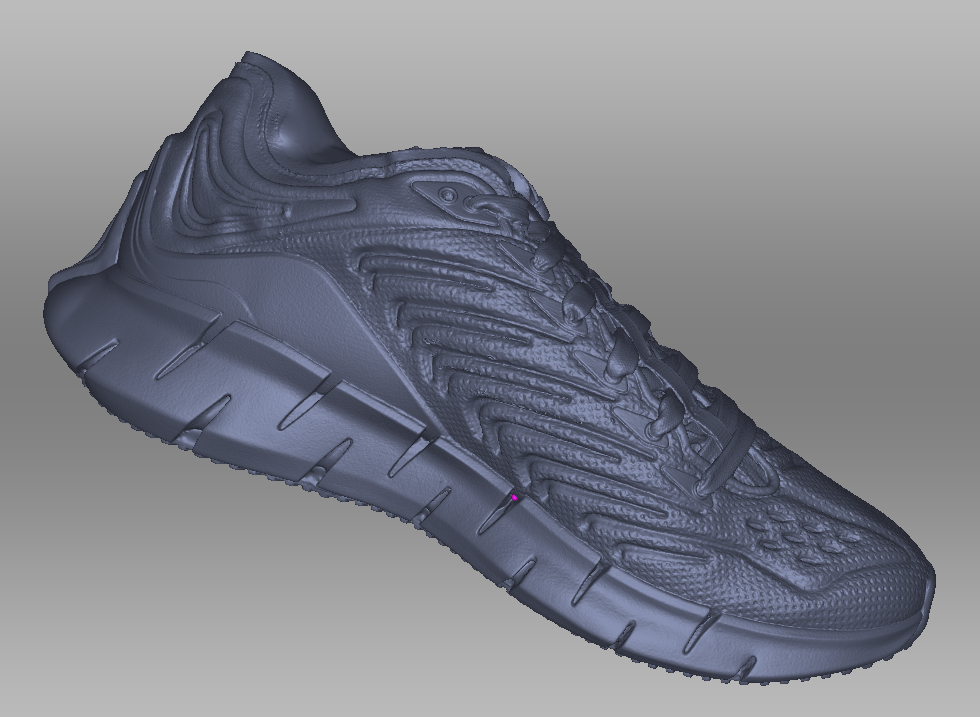
Geometry was created using several stitched together scans 
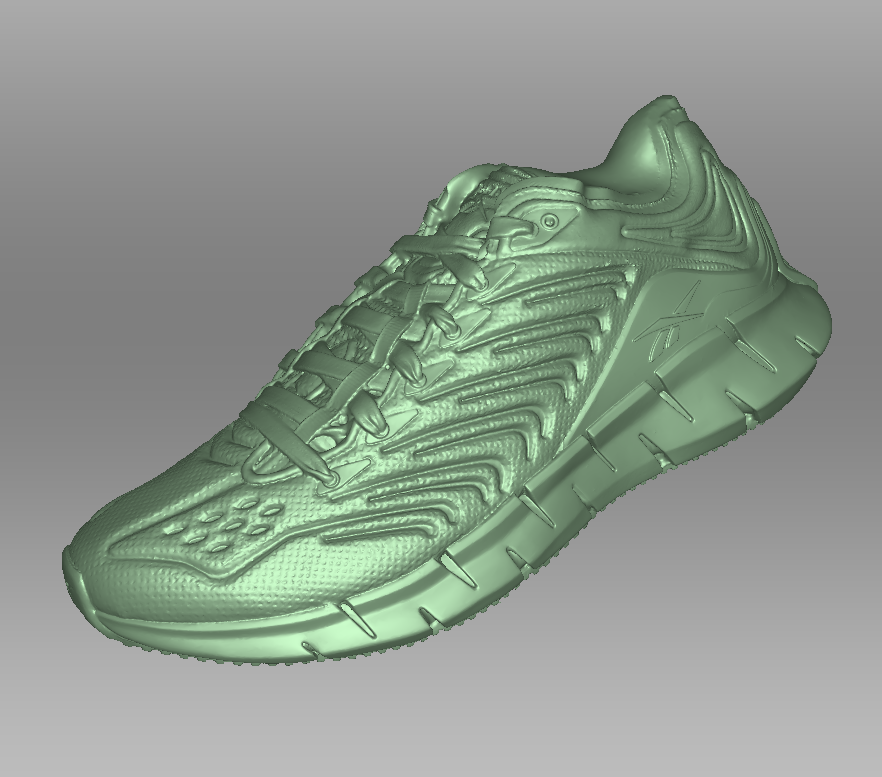

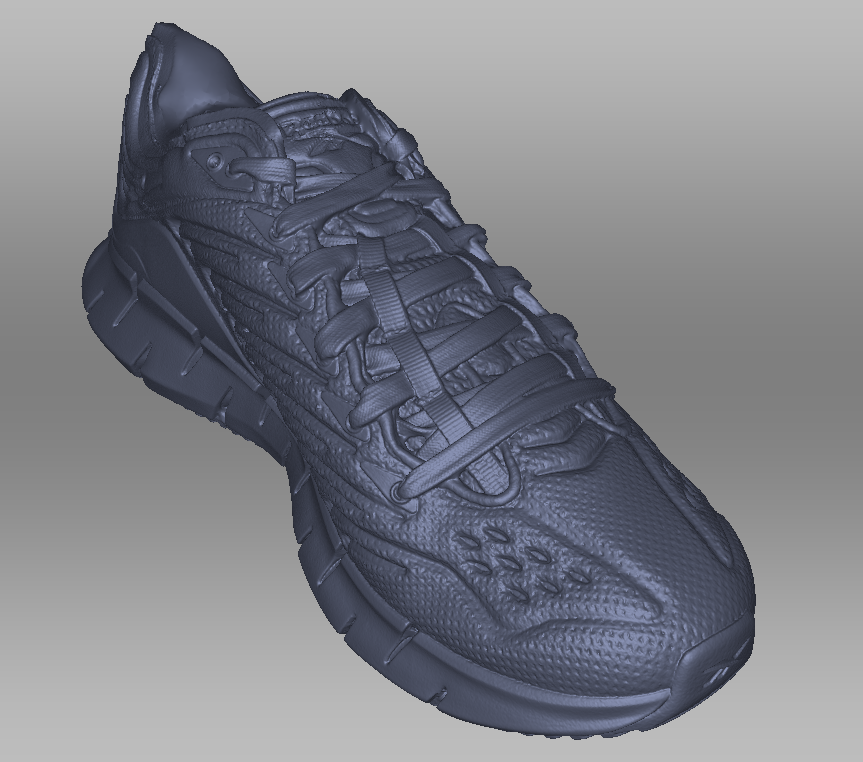

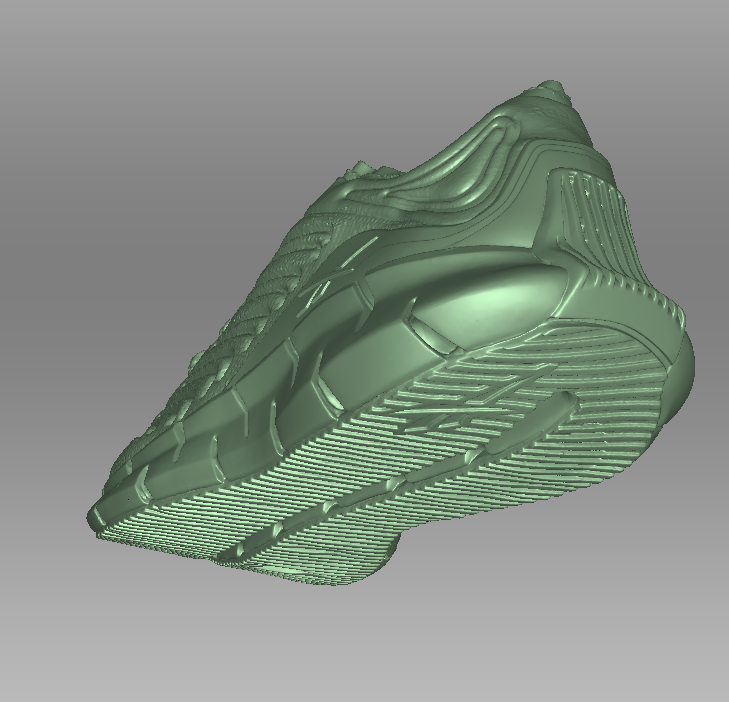
Using the Artec Eva we were able to capture a very details scan of the shoe.
- The texture was also captured during the initial scan output and processed using Artec Studio

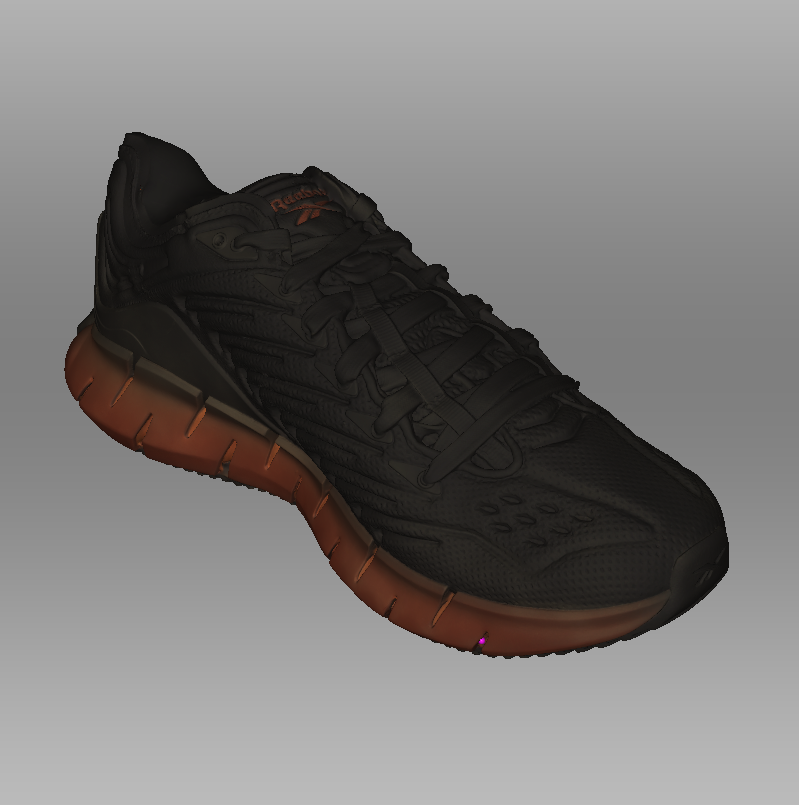
Using the Artec Eva we were able to capture a very detailed scan of the shoe. 
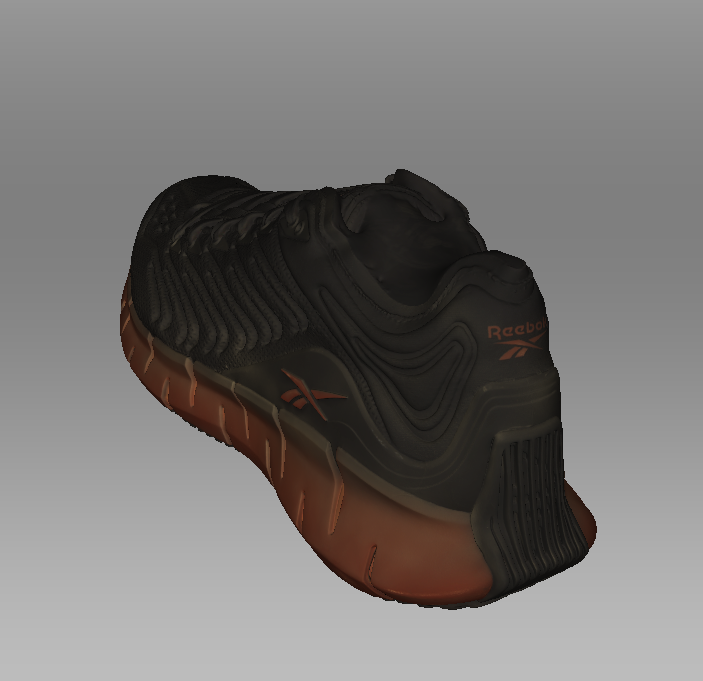

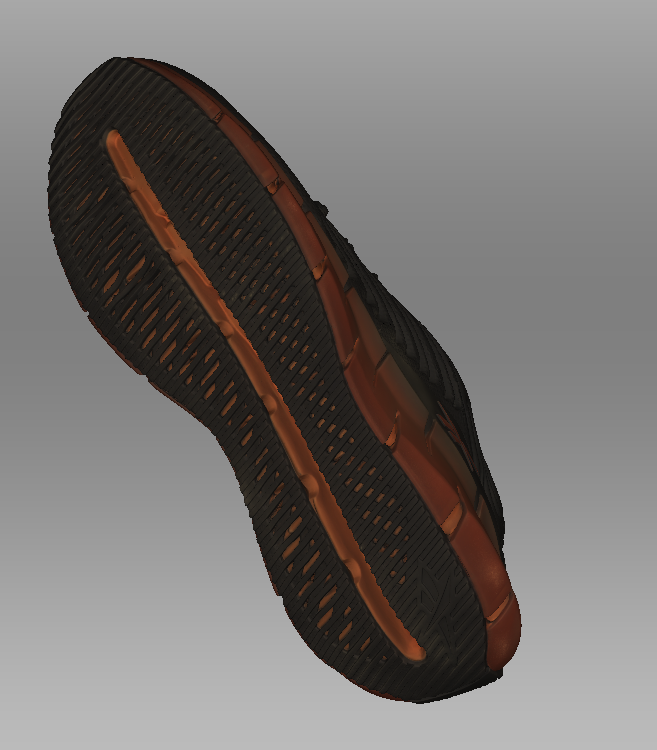
- Following scan capture, we ran a couple of test prints from the raw processed scan to see the quality of the original texture captured and its translation over to our new Mimaki 3D Printer. The results were pretty good but not quite perfect.
- This file was then brought into Zbrush where our team of digital sculptors cleaned up any imperfections in the geometry and added additional touchups to the model. Due to low light conditions during the scanning process, the vibrance of The Zig was not quite perfect. Our sculptors added additional saturation to the shoes’ orange hues, soles area, and logos to give that extra pop of colour.
- Our production team then reran the models on both the Mimaki 3duj-553 and the 3D Systems Project 660 to compare outputs and evaluate finishing options.
THE BOX
The second portion of the project consisted of a matching box to accommodate the pair of shoes. We produced a few variations in both traditional 2D and also 3D printing. Using the original box as a reference our sculpting team was able to replicate the design and graphics in zbrush for 3D production. You can see the final output below.
Press Release: https://www.artec3d.com/news/artec-studio-15-scan-to-cad-release
Santa Clara, Calif., May 28, 2020 – Artec 3D, a world-renowned developer and manufacturer of professional 3D hardware and software, today announces the availability of Artec Studio 15, the latest version of its award-winning software. New Scan-to-CAD functionality allows for basic quality control and basic reverse engineering operations to be conducted directly in Artec Studio 15, saving users time and effort. For CGI artists, enhanced colour reproduction and model-to-model texture transfers will make creating life-like models even easier. In addition, boosted algorithms will ensure maximum accuracy and speed when scanning with Artec’s handheld, long-range and desktop 3D scanners.


“We’ve been told by customers that with every new Artec Studio release it is like receiving an upgraded scanner, which is something we are extremely proud of,” said Artyom Yukhin, president and CEO of Artec 3D. “Our advancements in 3D scanning algorithms help us outpace the industry in accuracy, speed and usability, while our growing number of features save users of all skill levels time. This year’s Scan-to-CAD features will create a huge leap in productivity for users conducting reverse engineering and inspection tasks.”
Enhanced User Experience


An array of new features and upgrades that boost accuracy and speed. New custom groups can now be created in Artec Studio 15, allowing users to work with multiple sets of data at the same time and organize them in custom folders. New automated workflows, including boosted Autopilot and more advanced auto-align functionality that is 2x quicker, next-generation texture registration, and faster project loading that now revolves around each scan having a dedicated CPU, will increase user productivity. A visually redesigned workspace and customizable interface allow users to tailor the software to their preferences.
While speed and accuracy have increased across all Artec 3D’s scanners with Studio 15, the smart scanning mode for the Micro desktop scanner is a game-changer. Objects can be digitized twice as fast as if done manually. By calculating the most effective scanning path, Smart Scanning Mode captures the optimal quantity of surfaces, using the least number of frames, to achieve fully automatic, ultra-high-resolution scans and at minimum size for fast processing.
New Quality Control Features


Users can now conduct quick quality control operations within Artec Studio by aligning scans to imported CAD models, including STEP, IGES and X_T formats. Fast surface distance map comparisons and micron-accurate measurements of all created 3D models allow for easy identification of inconsistencies between a scan and CAD model. Scans can also be fitted with CAD primitives, such as spheres, cones, planes and cylinders. This allows for highly accurate measurements to be taken between actual scans and these simple geometrical shapes. For more complex processes and tools, users can export to any full package inspection software, such as Geomagic Control X.
Boosted Reverse Engineering Functionality


Artec Studio’s CAD primitives also streamline workflows for reverse engineering. After a scan is completed, primitives can be used to extract key geometrical data in a CAD format which can be immediately used in SOLIDWORKS or other CAD software. In addition, Artec Studio 15’s Precise Positioning feature lets users position models in the world coordinate system. Correctly positioned models with primitives aligned to the scan data can be exported as popular CAD formats for an easy transition directly into SOLIDWORKS, Geomagic Design X and other CAD software.
Vivid Textures for CGI and More


With Artec Studio 15, users can rest assured that colour will be captured and displayed correctly thanks to multiple automated features. Without manually predefining the area of application, the software filters out unwanted colour data from behind an object. The strength of this feature can be adjusted using the suppression level slider. Refined algorithms search across multiple scans for correct colour substitutes. This feature works similarly to the popular Glare Reduction tool. Another time-saving feature is model-to-model texture transfer. Users can clone textures from existing models and transfer them directly to new models.
Every now and then we have the privilege of working on very unique and exciting projects.
In 2016, our teams at both Selftraits and Objex Unlimited 3D scanned and printed hundreds of extras, props and models to assist in the production of Alexander Payne’s new film, “Downsizing.”
This film chronicles a scientist that discovers how to shrink humans to 5 inches… Pretty much the thing we do best! ![]()
![]()
Using our in-house photogrammetry solutions design and manufacture in Toronto, alongside some of Artec’s leading handheld scanners we were able to assist in this “Downsizing” process.
Watch the trailer Here:
3D scanning opens up the world of possibilities. Imagine being able to capture anything in the physical world and have a digital model of it in minutes. Every day, thousands of companies are using 3D scanners and software to:
- Create CAD models of real parts to capture lost designs, update existing products and make new ones
- Verify product quality by comparing manufactured parts to CAD designs
- Make mass customized products for health care, dentistry and fashion
- Scan entire buildings to create accurate 3D models
- And much more


Prosthetics are not cheep, they can range from $5,000 to $50,000. “For people without one or more of their natural limbs, the process of acquiring a prosthetic one is exhausting.
Back in 2011, Scott Summit, the founder of Bespoke Innovations, showed 3D-printed, individually designed prosthetic legs that are unabashedly artificial and completely personal. Summit has spent the past six years researching and working on 3-D prosthetics. With a 3D scanner and a 3D printer, we can now create a prosthetic limb for individuals, says Summit.
Unfortunately, it still costs a boatload of money, especially for those people who are unable to afford to get one.
Richard Van As, a South African carpenter, who lost four fingers from his right hand to a circular saw two years ago, decided to build his own hand. Working together with Ivan Owen in Seattle, they invented Robohand, a device that is made from cables, screws, 3-D printing and thermoplastic. It uses the rotation of a joint to enable five plastic digits to grasp. The device costs only about $500. In order to spread the device as widely as possible, Van As and Owen made the Robohand an Open Source design available online so everyone in the world can download and build one for themselves.


Image credit: London Science Museum
Then 17-year old inventor Easton LaChappelle from Colorado, built a prosthetic arm by generating most of the parts through a 3D printer. Currently LaChappelle has completed the third version of his robotic hand and the costs is only around $250. His ‘Arduino Robotic Arm’ is up to shoulder and has the same functionality as a human arm.


Eric Ronning, Mechanical engineering sophomore at University of Wisconsin-Madison invented a 3D printable prosthetic hand for amputees in developing countries. Named the Manu Print, the hand has a unique design that allows users to close and open each finger individually by applying only one tensile force. The hand is similar to the human hand and is purely mechanical and has no electronic parts. And the total mateial costs is only 20$.


Then, there was another project: Zero Point Frontiers, an engineering company in Huntsville, has built an new hand for two-year-old Huntsville toddler Kate Berkholtz who was born without fingers on her left hand. Zero Point Frontiers used their 3D printer to help this little girl by creating her a much needed prosthetic, and this 3D printed hands only costs about $5.


In September, Bristol, UK based Joel Gibbard (23) launched the Dextrus hand on indiegogo, a 3D printed robotic hand that offers much of the functionality of a human hand in a very low cost. It uses electric motors instead of muscles and steel cables instead of tendons. 3D printed plastic parts work like bones and a rubber coating acts as the skin. The hand can be connected to an existing prosthesis using a standard connector to give an amputee another option, and it costs less than $1,000.


Though these products are not as high quality as high-end prosthetics, they are functional, simple and low cost. In some parts of the world, the choice is between having a mediocrely-fitting prosthetic and not having one at all. That is the situation that spurred these inventors to action. These 3D-printed product has already benefitted a lot of children. With the increasing affordability of 3D printers, future robohand could be a lot cheaper and, also a lot of more capable.”
Watch below a nice story from CBS news about 12-year old Leon McCarthy and his awesome 3D printed prosthetic hand.
Two years ago, Paul McCarthy began searching for an inexpensive yet functional prosthetic hand for his son Leon, who was born without fingers on one of his hands. McCarthy came across a video online with detailed instruction on how to use a 3-D printer to make a prosthetic hand for his son.
Article Source : 3Ders.org
Products
Services
Join Our Newsletter
Objex Unlimited
2140 Dunwin Drive.,
Mississauga, Ontario L5L 1C0
Email: sales@objexunlimited.com
Phone: 416-233-7165
Mon – Fri
9am – 5pm EST


